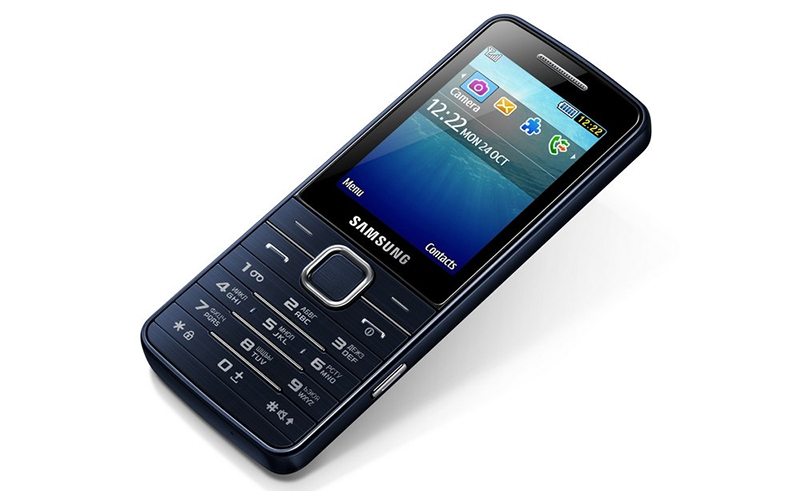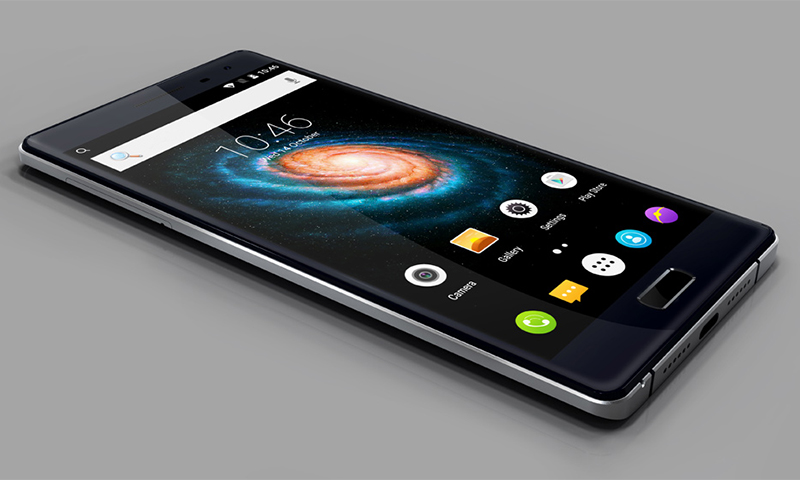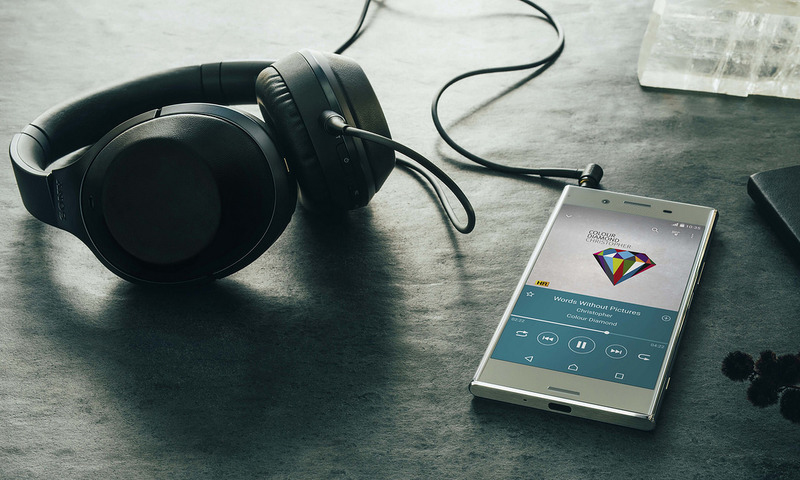It is believed that the more expensive the phone, the more functional and more convenient it is. This is partly true, but most owners of clever mobile phones do not use half of their capabilities. So if you do not have enough money to buy a megaproved device, do not be upset. Our tips will help you find an inexpensive, but very good phone for yourself, your child or elderly parents.

Content:
The best manufacturers of good and affordable phones
The best phones in the world produce Apple and Samsung, but, unfortunately, the top models of these manufacturers cost big money and not everyone can afford it. Of course, you can buy something from the early series, but their functionality, limited by modern standards, will not give you any pleasure from owning a branded device.
- You'll like it: A selection of smartphones from Samsung
To the delight of many users, young Asian firms have already learned how to produce decent devices that are in no way inferior to everyone's favorites. They only cost 6-10 times cheaper than the goods of famous brands.
However, a number of European companies also have a line with low-end devices, which, although they have more modest functionality, are distinguished by high quality.
Find cheap, but good mobile phones can be in the range of the following manufacturers:
- Nokia (now produced under the brand name Microsoft);
- Xiaomi;
- Lenovo;
- Meizu;
- Huawei;
- Lg.
The best models of these firms have repeatedly been in our ratings. Among inexpensive mobile phones there are many good copies. And in order to save money, we don’t have to sacrifice the important characteristics and functions of the device, let's determine what we need to pay special attention to.
The principle of operation and device mobile phone

Technical description of the mobile phone is unlikely to interest anyone, so let's go over only its main elements that may affect your choice.
The main parts of any phone are the case, the display and the keyboard (or the function buttons, if we are talking about a touch model).
Inside are equally important details of the mobile:
1. Microphone and speaker, catching your and transmitting someone else's speech;
2. Radio transmitter combined with receiver and antenna;
3. Microprocessor and memory chip;
4. Slots for SIM cards and flash drives;
5. Photo video camera (one or two);
6. Removable or built-in battery that provides power to the entire device.
The radio module is what makes the phone a telephone, that is, it allows you to transmit speech at a distance through a system of external antennas. All other stuffing just works with information and media.
The main information (contacts, SMS, etc.), large files, such as music collections, films, games, are best kept on the flash card are stored in the “native” memory. Well, the processor is responsible for reading the memory data and processing it.
Types of mobile phones
Push button

SELECTION OF THE BEST PUBLIC TELEPHONES
Push-button devices are used by people who need a telephone as a means of communication. Such models either have a minimum of additional functions, or do without them. As a result, the main advantages of the simplest dialers are: low cost and unrealistically economical battery consumption.
However, today many manufacturers produce more advanced push-button phone models with a good camera resolution of up to 8 megapixels, an integrated MP3 player, a slot for a capacious USB flash drive and a sufficient amount of native memory of up to 512-1000 MB.
Of course, the display of such models is small compared to touchscreen smartphones - the rest is taken by the numeric keypad. But the margin of safety is much higher.
Pros:
- For a small screen, a very decent camera;
- Voiced speakers;
- "Long-running" battery;
- A sufficient number of necessary functions;
- The sturdy case, and indeed the whole structure as a whole is very reliable;
- Low cost.
Minuses:
- Small screen;
- The lack of an operating system that in the Internet age seriously limits the capabilities of a mobile phone.
- We recommend:The best smartphones with a good speaker
Sensory

RATING OF THE BEST SMARTPHONES
Smart phones are surely pushing button models away from the market, and not only due to their rich functionality and stylish appearance. There were a lot of decent smartphones at an affordable price, putting them on a par with advanced dialers.
Of course, their characteristics do not cause a delighted sigh, but they are quite acceptable. Budget sensor may have a main camera of 8-13 megapixels and a frontal one from 5 to 8 megapixels. The screen diagonal here usually does not exceed 5-5.5 ″, while the resolution is quite decent and easily reaches the level of HD (1280x720 pixels). The operating system is Android or Windows.
RAM in low-cost smartphones can boast a good volume of 1-3 GB (the Chinese offer up to 6). The processor can have 2, maximum - 4 cores, but this is enough even for "heavy" toys.
The only problem with budget smarts is a weak battery. The battery is discharged after half a day of intensive use with a network connection.
Pros:
- Rich selection and modern design;
- Functionality;
- Powerful processor and large memory;
- The presence of an additional front camera;
- Big screen.
Minuses:
- The battery may not be enough for the rest of the day;
- "Sick" place - a fragile screen that occupies the entire surface of the phone.
- You'll like it: The best smartphones with a powerful battery
Button cell phone selection options

Form factor
Push-button telephones, still remaining on the shelves, are usually presented in three forms:
1. Monoblocks - the most reliable and sturdy;
2. "Folding beds" - nice, comfortable, but short-lived due to frayed loop;
3. Sliders - they are equipped with a fairly large screen and also look spectacular, but they serve a little longer than folding models, although they are far from monoblocks.
Decide for yourself what is more important to you - reliability or beauty.
Screen
The display sizes for push-button devices do not exceed 3.5-4 ″, while the minimum diagonal length for modern devices is 1.44 ″. Accordingly, the screen resolution should fall in the range from 320x480 to 480x800. Below is undesirable, above - does not make sense.
Weightedly worth approaching the choice of the mathematics. If you want to get a high enough image quality at the lowest cost of the phone, pay attention to these panels:
1. CSTN - the latest generation of these passive matrices is already pleased with good color reproduction, quite comparable with the indicators of more expensive TFT, viewing angles of up to 140 ° and a response of 0.1 seconds.
2. FSTN - with the same performance characteristics, provides slightly larger viewing angles and accurate hue transfer in the picture by compensating for color shifts.
Active matrices are more expensive, but still quite affordable. These include liquid crystal TFT and MVA screens. Their speed is much higher, and the contrast and clarity of the picture is better than that of passive panels.
Camera
In the push-button phones traditionally installed the most simple and weak cameras from 0.3 MP to 3.2 MP. And if you want to get at least some decent pictures on your device, take a model with a shooting resolution approaching the maximum value.
In all other cases, the number of pixels does not matter - they will still be monstrously small, so stop at 0.3-0.5 megapixels, so as not to overpay for a useless device.
- You will be interested in: Ranking of the best smartphones with a good camera
Memory
The lack of a microprocessor in conventional mobile phones gives one advantage - you do not need a large amount of memory: 16-32 MB is more than enough to operate the device.
As for those who like to store hundreds of songs and dozens of videos on their phone, it’s better for them to buy push-button models at all in favor of smarts. Whatever the manufacturers promise there, budget “dialers” will not pull the flash drive by more than 4 gigabytes.
Options for choosing an inexpensive smartphone

Screen and Matrix
The average size of the diagonal of an economy-class touchscreen is 5-5.5 inches - such a screen is enough for any non-spoiled user. However, resolution is still important, but smart phones are fine.
- We recommend: The best compact smartphones
As a rule, they are equipped with HD-displays 1280x720 (everything above is already beyond the budget segment). The main thing is that this indicator is not significantly lower. For example, the resolution of 940x560 on a 5-inch screen will no longer give an ideal picture, although the image will not be frankly bad.
For touch phones, the type of matrix used is also important - not only the quality of the picture, but also the viewing angle, contrast and color saturation of the image depend on it.
From TN, installed in the cheapest smartphones, it is better to immediately give up. And although they are characterized by fast response and do not particularly stress the battery, the distortion of colors and low contrast completely negate their advantages.
If you want to buy a really good, albeit inexpensive phone, choose an IPS screen. These matrices have high color rendering, excellent contrast and very wide viewing angles, reaching 180 degrees.
Of course, you will not find the standard IPS these days, so we suggest considering its most successful modifications:
1. H-IPS (Horizontal) sample of 2007 - it has quite a decent contrast and a clear white balance, the viewing angle without distortion of the picture is 178 degrees.
2. E-IPS (Enhanced) - here the angle of visibility is maximized, and the response time is only 5 ms. In this case, the cost of the matrix itself, developers managed to significantly reduce.
3. P-IPS (Professional) - can show over 1 billion different colors.
4. AH-IPS (Advanced High Performance) - has a good resolution and at the same time consumes 20% less energy.
CPU
Most inexpensive smartphones are equipped with Snapdragon or MediaTek processors. The first ones are a bit more expensive, but they do an excellent job with any tasks - right up to resource-intensive video games. The second ones are slightly weaker, but they don’t really increase the cost of the device.
- You'll like it: The best smartphones for games
In addition to the processor series, you need its performance. For the budget model, a good indicator will be the clock frequency in the range of 1300-1700 MHz. The number of cores - 2 or 4, if you buy a thoroughbred "Chinese".
operating system
OS is a mandatory attribute of any "smart" phone, turning it into a minicomputer.
Modern smarts operate on three platforms:
1. Android is simple and functional. The interface of the phone with Android can be customized for yourself, making it unique and as convenient as possible. Another advantage of this system is that it supports many free applications.
2. iOS is Apple’s proprietary technology, immune to viruses. Alas, inexpensive phones with such an axis are extremely rare. Now only iPhones of 4 and 5 models can be attributed to this price category, but their software is outdated and has not been updated since 2015.
If you want to know how does a smartphone differ from an iphone, be sure to read our article.
3. Windows - while this system is used only in Nokia phones by Microsoft and does not deserve much popularity. Mobile "windows" stuck in one place, seriously lagging behind the rapidly developing Android and iOS. However, now Vindous gradually gaining momentum, and who knows how the situation will develop in a year.
Memory
This parameter is much more important for smartphones than for push-button models, so the order of numbers here is completely different.
To support all the necessary applications and store valuable files, the internal memory of the phone must contain at least 4-8 GB. If (or rather, when) this is not enough, the situation can be corrected with a bulk flash card.
The operative should also be rather big, since the speed of the phone depends on it. In the budget price segment, you can easily find models with an OP of 3-4 gigabytes, the Chinese even offer up to 6 GB.
In any case, it is worthwhile to be guided by these numbers - such characteristics will be enough for the smart to work. You can also consider a 1-2 GB RAM, but be prepared for the fact that you have to constantly close applications to open the following.
Camera
On modern smartphones, instead of one camera, two are traditionally installed. From the back (main) requires a good resolution of 8-13 megapixels to take pictures in HD quality. Of course, there is a more advanced optics, but it does not fall into the budget category, and too high a resolution is not always justified.
The figure for the front camera is usually slightly lower, but it should not be less than 5 megapixel - this will allow you to make frames in the format of 1024x720 px It is desirable that in addition to all optics, the phone has an LED flash and autofocus function, and also can record video at a frequency of about 30 frames per second.
Battery
The more powerful your chosen device is, the more power it will consume. Accordingly, the phone with a 4-core high-frequency processor, which is actively used for surfing the Internet, playing games and watching movies, will require the most powerful battery.
In the budget price category, the maximum battery capacity reaches 4000 mAh - this is enough for 6-7 hours of continuous operation. But if you choose a not very sophisticated gadget and more often use it for its intended purpose, you can take the battery at 2800-3200 mAh.
If you are an active user of your guide, pay attention to external batteries.
Which phone to choose

1. People at the age who are not too amicable with the newfangled technology, will fit a push-button device, not overloaded with unnecessary options. It is better that it was a monoblock in a reliable case with an average-sized screen of 2-3 ″. Saving on functionality, do not spare money for a good display, which can be viewed even in bright sunlight. Ideal if it is a TFT or MVA matrix.
- You will be interested in: The best phones for the elderly
2. Schoolboy will be more interesting budget smartphone. Maximum features for a low price offer Chinese smartphone makers, so be guided by this group of products, if you want to satisfy a demanding child. Pay special attention to the quality of the camera: the main optics should be really good and have a resolution of at least 8 megapixels. RAM can be selected within 2-4 GB, “native” - no less than 16.
3. Students and working people also fit touch phone models. Here you need to focus on the characteristics of the processor, choosing a 2 or 4-core device with a good clock frequency of about 1500-1700 MHz. The amount of internal memory of 8 GB can be called sufficient, but the RAM should be really large: the critical minimum is 2-3 GB. For lovers of shooting, devices with a rear camera with a resolution of about 13 megapixels are suitable, and 5 will be enough for the front camera.
- We recommend: Best cheap smartphones
The cost of cheap and good phones

1. Push-button telephones, in principle, are all cheap - the majority falls into the price range from 600 to 3000 rubles. But if you need a good model, choose devices not lower than 1.5-2 thousand.
2. Smartphones start from 1500 rubles, but we recommend considering options from 4-5 thousand.
It will be interesting to friends too

